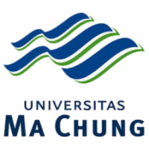
Welcome to this compilation of research articles that spans a diverse range of topics within the realm of language education and linguistic analysis. Each contribution offers unique insights, methodologies, and findings, creating a comprehensive exploration of the multifaceted landscape of language studies.
The first article delves into the innovative EGRA technique, showcasing its effectiveness in addressing the challenges of English grammar learning for eighth-grade students. The subsequent research investigates hate speech in the context of social issues, providing a pragmatic analysis of its impoliteness, conceptual meanings, and types. Digital technology takes center stage in the third article, which explores the integration of vlog media to enhance speaking skills in language education. This study reflects the evolving nature of education, where digital tools become dynamic facilitators of engaging and effective learning experiences. The challenges associated with digital textbooks in reading comprehension take the spotlight in the fourth article, shedding light on issues such as focus, distractions, and information literacy. This research contributes valuable insights into the evolving landscape of digital learning materials.
One of the Klausa’s articles delves into the realm of Mandarin idiomatic expressions with numerical elements, unraveling their meanings and functions in Chinese society. This qualitative study offers a cultural and linguistic exploration of chéngyǔ. Digital platforms continue to influence education in the sixth article, which investigates the impact of YouTube vlogging on students' speaking proficiency. This research showcases the potential of digital media in language education and skill development. Klausa also presents a cognitive stylistic analysis of a song's lyrics, offering insights into how cognitive processes and stylistic choices intertwine to construct emotional narratives within music.
We extend our appreciation to all the contributors for their valuable insights, collectively enriching our understanding of language education and linguistic analysis. May these articles serve as catalysts for further research and innovation within the dynamic field of language studies.

 PDF Download: 17
PDF Download: 17















